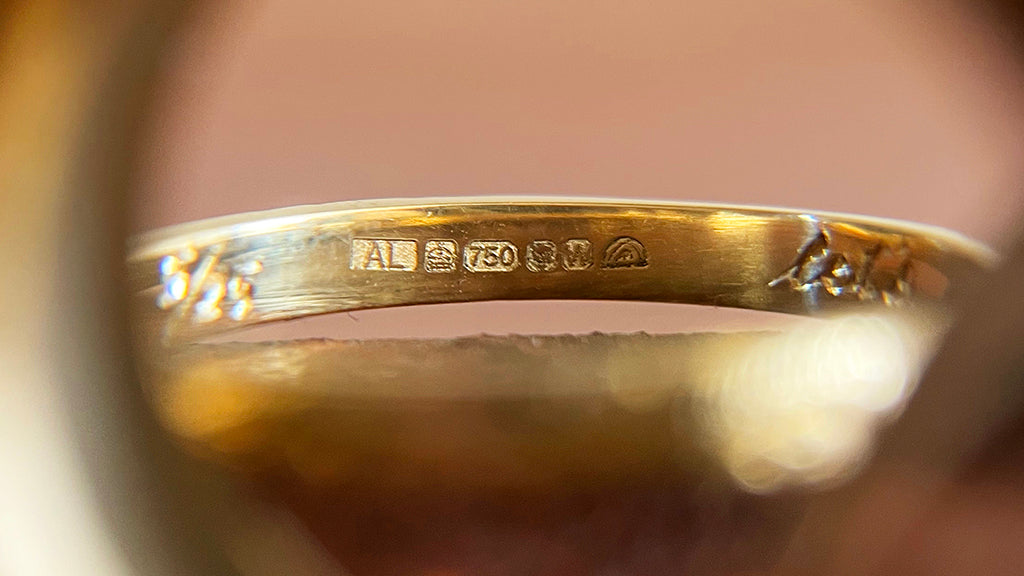Your Cart is Empty
It’s very rare that a piece of jewellery is cast using 100% precious metal. Most jewellers combine (or ‘alloy’) precious metals with other metals in order to increase durability, make the metal easier to work with or make the finished jewel more wearable.
For example, many people are surprised to learn that platinum in its pure state is soft and unsuitable for creating jewellery. That’s why the most common type of platinum jewel is 95% pure platinum and 5% other metals that add critical technical properties. Rhodium, for example, raises melting point and increases hardness, and often makes the platinum alloy appear brighter and whiter.
In many countries, it’s a legal requirement to brand jewellery with a mark that verifies the percentage of precious metal present. This is called hallmarking, and whilst it’s standard practise here in the UK, it’s not actually mandatory everywhere in the world.

The UK holds some of the strictest hallmarking laws in the world. Every piece of jewellery made from precious metal and sold in the UK must be sent to one of four Assay Offices, where government employees test each piece for its precious metal percentage and stamp them with the relevant hallmarks.
Historically, hallmarks in the UK were made by punching the mark into the metal with force. Today, it’s more common that lasers are used to etch the mark into the piece. The mark made depends on which of the four Assay Offices the piece was sent to, but the presence of the mark itself verifies that the piece was proven to contain the volume of precious metal that the jeweller advertised.
The possible Assay Office marks are an anchor for Birmingham, a castle for Edinburgh, a rose for Sheffield, and a leopard’s head for London. The leopard’s head is proudly displayed on most Lebrusan Studio jewels as an indication of their Hatton Garden provenance.
In addition to this legally required hallmark, jewellery must bear a purity mark (which consists of a two-digit numbers and the letter k, or a three-digit number) and a maker’s mark (which could be nearly anything, but is often initials or a logo). Our maker’s mark is ‘AL’ for ‘Arabel Lebrusan’. Additionally, if a piece of jewellery was created in Britain before 1999, it will bear a date stamp, a legal requirement of all British jewellery until that year.
If a piece of jewellery is created from a special third party-certified metal like Fairtrade Gold or Fairmined Gold, it will also bear a unique stamp that proudly verifies its provenance.
 Tara's bespoke engagement ring, created in the UK using inherited gold and diamonds
Tara's bespoke engagement ring, created in the UK using inherited gold and diamondsIn the US, hallmarking is not a legal requirement. Many US jewellery collectors instead look for certain maker’s marks for assurance that a piece is of high quality. The problem is that maker’s marks aren’t regulated, so there’s no way of connect a maker’s mark to a process that proves a piece is advertised honestly. In fact, in the US, there is no legal requirement to even register a maker’s mark; it’s simply up to the maker to add their mark as they wish.
Some US companies with large markets in the UK do send their jewellery to UK Assay Offices for hallmarking so they can legally sell their pieces overseas. For US customers seeking assurance that a piece is advertised honestly, shopping with a company that follows this practice could be a safer bet than shopping elsewhere.
As far as collectors high quality jewellery are concerned, these differences are what make the jewellery market in the UK a different ball game to that of the US.
